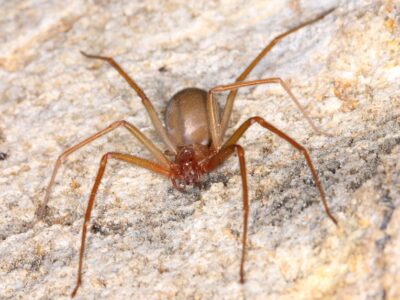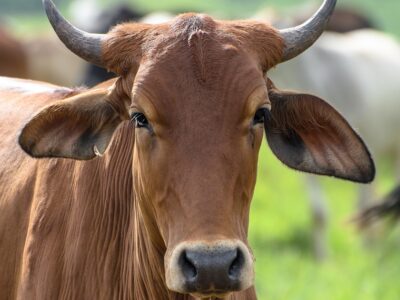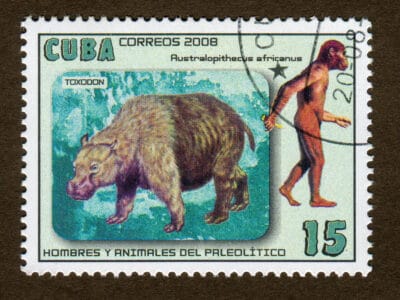Below you can find a complete list of Uruguayan animals. We currently track 233 animals in Uruguay and are adding more every day!
Since Uruguay has many different climate zones and various terrain, including rainforests and beaches, this South American country is home to many kinds of wildlife. There are 48 amphibian species in Uruguay. Additionally, there are 448 recorded bird species, 118 mammal species, and 79 reptile species. Of those, 15 are endemic, and 37 are threatened. Yet, the number of native animals continues to decline. In the grasslands, which cover about 60% of the country, overgrazing is a big problem. Other pressures on native animals include mining and commercial development, the introduction of alien species, and climate change.
The Official National Animal of Uruguay
The national animal of Uruguay is the southern lapwing. This bird is often called the tero in Uruguay. This bird, which is the only crested wader in South America, was chosen to be the national animal because of its bold and combative nature. This small native bird looks similar to a roadrunner.
Where To Find The Top Wildlife in Uruguay
One spot that you will want to visit in Uruguay is the Cabo Polonio National Park, where you can see hundreds of sea lions. These marine mammals use this location for breeding in the early part of the year. Those that do not have a mate protect those who are busy raising their young. You can often hear the sea lions for miles before you see them.
Potrerillo de Santa Teresa Biological Station lying next to Laguna Negra is home to over 30 species of amphibians and reptiles and 27 mammal species. The marshes at this location are a favorite, with herons looking for a place to raise hatch and raise their young. Additionally, over 59 other aquatic bird species have been found at this location. The Laguna Negra is the largest of the coastal lagoons of Uruguay. The old-growth forest at this location is home to a herd of the smallest autochthonous deer in the world, along with weasels, wildcats, and raccoons. This forest is a great place to spot the blue cardinal.
The Most Dangerous Animals In Uruguay Today
While most animals in Uruguay will not hurt you, there are some dangerous animals in the country. Even though jaguars are extinct in Uruguay, these are the most dangerous animals in Uruguay. Be sure to watch for these most dangerous animals in Uruguay if you travel there:
- Pumas – This mammal that cannot roar has been known to attack humans.
- Micrurus altirostris – This member of the coral snake family is very venomous.
- Nutria – This beaver-like animal can spread serious diseases, even if people encounter their droppings.
- Latrodectus mactans spider- Sometimes called the brown widow spider, if you are bit by this spider, then you may go into renal failure.
- Ocelots – Although they rarely attack, ocelots have attacked humans in Uruguay.
Endangered Animals In Uruguay
While you will not see a jaguar in Uruguay because they are extinct, there are endangered animals in Uruguay. While we will not deal with the long list of extant ones, endangered animals include:
- Giant otter
- Giant armadillo
- Strange big-eared brown bat
- Sei whale
- Fin whale
- Blue whale
- Marsh deer
- Pampas cat
- Margay
- Southern long-nosed armadillo
The Flag of Uruguay
The Flag of Uruguay is made up of a field with nine equally spaced horizontal stripes of blue and white. The Sun of May is depicted as having a face and 16 rays that alternate between wavy and triangular in the white canton.
Uruguayan Animals

Agouti
The agouti is one of the only animals that can crack open Brazil nut pods!

Amazon Parrot
These parrots can be trained to be "talking birds" that mimic human speech

Ant
First evolved 100 million years ago!
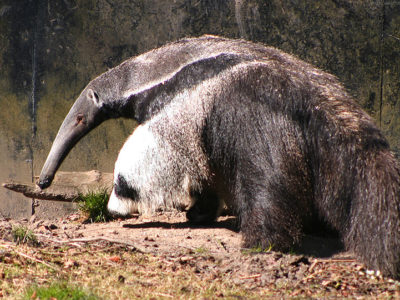
Anteater
Has the longest tongue of any animal in relation to its body size!
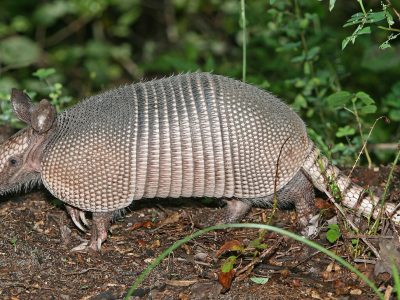
Armadillo
Can curl into a hard, protective ball!

Armyworm
They are so named because they "march" in armies of worms from one crop to another in search of food
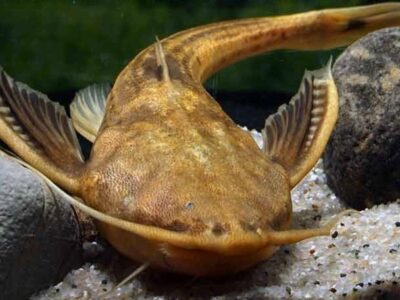
Banjo Catfish
The banjo catfish is extremely shy and known for hiding from onlookers.

Barb
There are over 1768 known species!

Barn Owl
Found everywhere around the world!

Barn Swallow
Older offspring help care for new hatchlings.

Bat
Detects prey using echolocation!

Bear
There are 8 different species!

Bed Bugs
Bed bugs feed for 4-12 minutes.

Bee
Rock paintings of bees date back 15,000 years

Beetle
There are more than 350,000 different species

Bird
Not all birds are able to fly!

Biscuit Beetle
The biscuit beetle form a symbiotic relationship with yeast
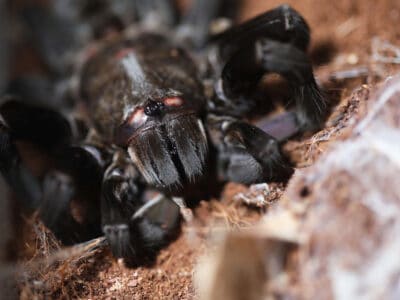
Black Tarantula
They can grow to be 7 inches long!

Black Widow Spider
They typically prey on insects!
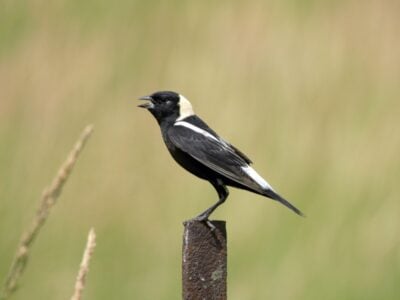
Bobolink
In spring, the male bobolink is the only North American bird who is dark below and light colored above. This makes identification easy.

Booby
Seabirds found across the South Pacific!
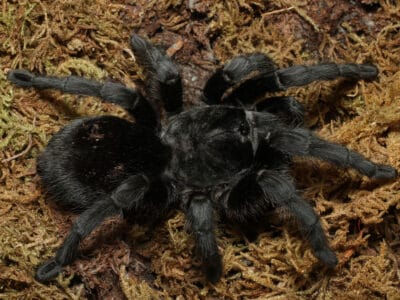
Brazilian Black Tarantula
They seem to move in slow motion.

Brazilian Treehopper
“Mild-Mannered Minimonsters”

Brown Dog Tick
Can live its entire life indoors

Butterfly
There are thought to be up 17,500 species!

Caecilian
Some species' babies use their hooked or scraper-like teeth to peel off and eat their mother's skin
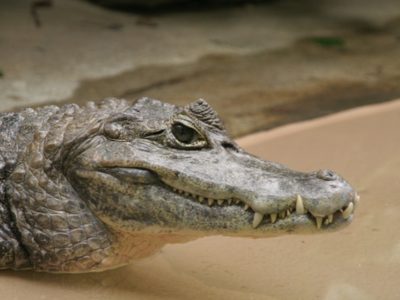
Caiman
Can grow to up 6 meters long!

Camel Cricket
The camel crickets that are found in the USA are light brown in color. They also have dark streaks all over their body.

Capybara
Excellent at both diving and swimming

Carpenter Ant
Carpenter ants can lift up to seven times their own weight with their teeth!
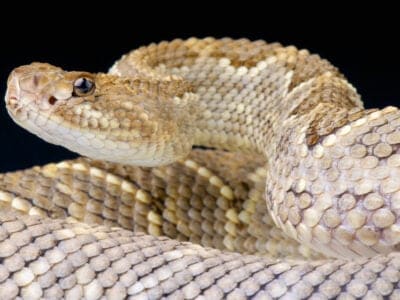
Cascabel
Cascabels rely on their camouflage first, and rattle if that doesn't work.

Cat
May have been domesticated up to 10,000 years ago.

Caterpillar
The larvae of a moth or butterfly!

Catfish
There are nearly 3,000 different species!

Centipede
There are about 3,000 documented species!

Chicken
First domesticated more than 10,000 years ago!
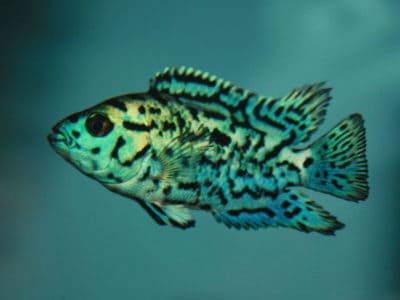
Cichlid
There are more than 2 000 known species!

Cockroach
Dated to be around 300 million years old!

Codling Moth
Pupae are able to undergo diapause to survive poor fruit yield years and winter.
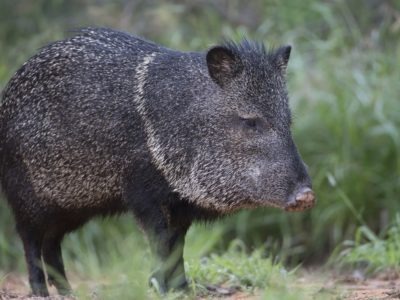
Collared Peccary
Form bands of up to 12 individuals!

Common Furniture Beetle
The common furniture beetle feeds exclusively on wood

Common House Spider
House spiders have the ability to eat most insects in a home.

Coral Snake
There are over 80 species of coral snake worldwide.

Cormorant
They can fly 35 mph and dive 150 feet below water.

Cory Catfish
All Cory Catfish have three pairs of barbels around their mouth that they use to detect food.

Cow
There are nearly 1.5 billion worldwide!

Crab
There are 93 different crab groups
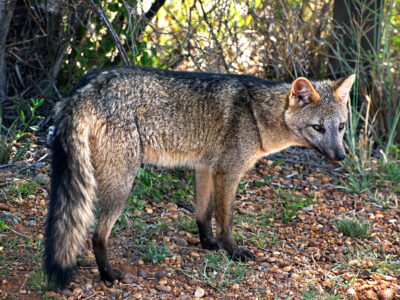
Crab-Eating Fox
The crab-eating fox is extremely adaptable, living in all sorts of habitats and eating almost any available food.

Crab Spider
Crab Spiders can mimic ants or bird droppings

Cricket
Male crickets can produce sounds by rubbing their wings together

Crocodile
Have changed little in 200 million years!

Crocodylomorph
Crocodylomorphs include extinct ancient species as well as 26 living species today.

Crow
A group of these birds is called a Murder.

Dog
First domesticated in South-East Asia!

Dog Tick
Dog ticks feed on dogs and other mammals

Donkey
First domesticated 5,000 years ago!

Dragonfly
It's larvae are carnivorous!
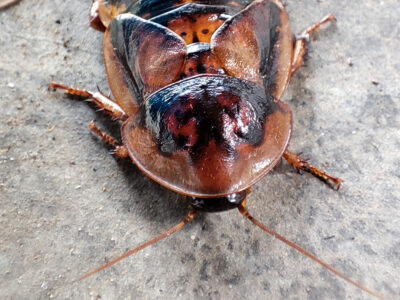
Dubia Cockroach
The most popular species of feeder roach

Duck
Rows of tiny plates line their teeth!

Dung Beetle
The dung beetle can push objects many times its own weight
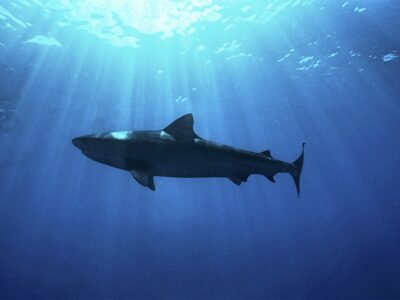
Dusky Shark
The Dusky Shark sometimes eats trash discarded by humans.
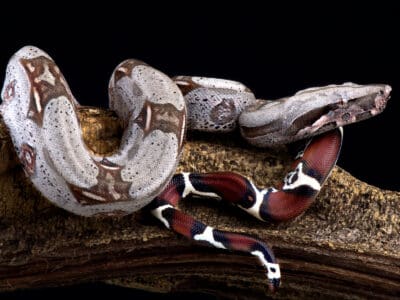
Dwarf Boa
Some species can change color from dark to light, and back again.

Eagle
Has exceptional eyesight!

Earthworm
They are hermaphrodites, which means they have male and female organs

Earwig
There are nearly 2,000 different species!

Eel
Eels can be a mere few inches long to 13 feet!

Falcon
The fastest creatures on the planet!

Fallow deer
The fallow deer has more variation in its coat colors than most other deer.

False Widow Spider
False spiders actually prey on black widow spiders and other hazardous spiders
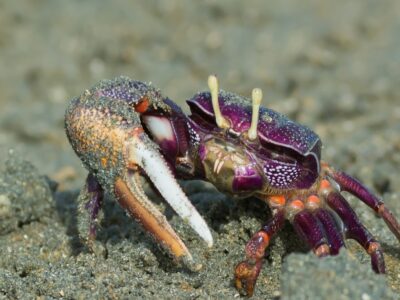
Fiddler Crab
The fiddler crab gets its name from the motion the males make with their over-sized claw during the mating ritual.

Firefly
The firefly produces some of the most efficient light in the world

Flamingo
Sleeps on just one leg!

Flea
Adult fleas can jump up to 7 inches in the air
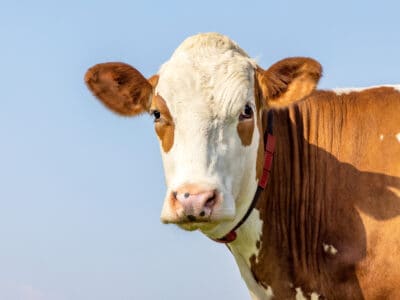
Fleckvieh Cattle
Besides being bred for milk and meat, these cattle were also used as draft oxen.

Fly
There are more than 240,000 different species!

Flying Squirrel
Can glide up to 90 meters!

Frog
There are around 7,000 different species!

Fruit Fly
Fruit flies are among the most common research animals in the world
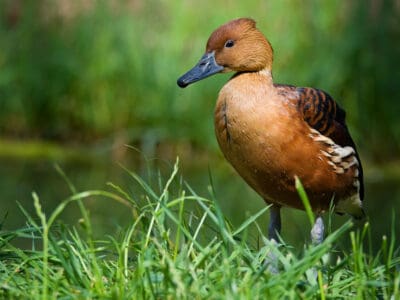
Fulvous Whistling Duck
They build a ramp from their nest, which leads to a nearby water source

Gecko
There are thought to be over 2,000 species!

German Cockroach
The most common type of urban roach

Glowworm
Found inhabiting dense woodland and caves!

Gnat
Males form large mating swarms at dusk

Grasshopper
There are 11,000 known species!

Guinea Pig
Natively found in the Andes Mountain range!
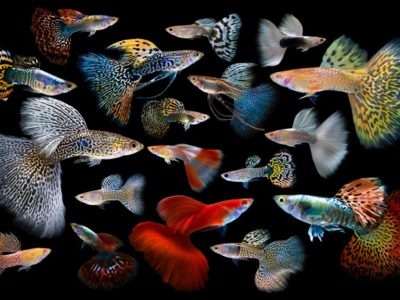
Guppy
Also known as the Millionfish!

Gypsy Moth
One of the most invasive species in the world

Hamster
Able to run as quickly backwards as forwards!

Hare
Can reach speeds of over 50 mph!
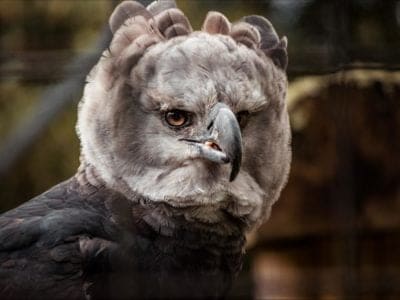
Harpy Eagle
Talon's the size of a grizzly bear's claws!

Harris’s Hawk
Their vision is eight times better than a human's

Hawk Moth Caterpillar
Many hawk moth caterpillars eat toxins from plants, but don’t sequester them the way milkweed butterflies do. Most toxins are excreted.

Hercules Beetle
This dynastine scarab beetle makes a weird huffing sound when it’s disturbed.

Heron
Inhabits wetlands around the world!
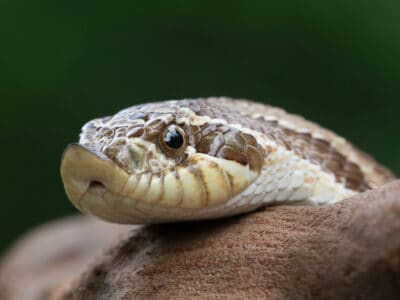
Hognose snake
Prima Donnas of the Snake World

Honey Bee
There are only 8 recognized species!
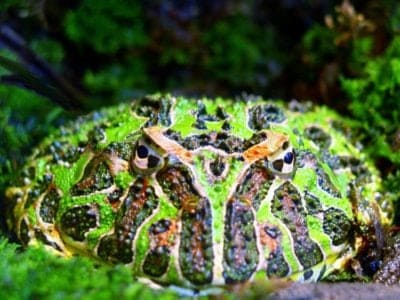
Argentine Horned Frog
Natively found in South America!

Horse
Has evolved over 50 million years!

Horsefly
Horseflies have been seen performing Immelmann turns, much like fighter jets.
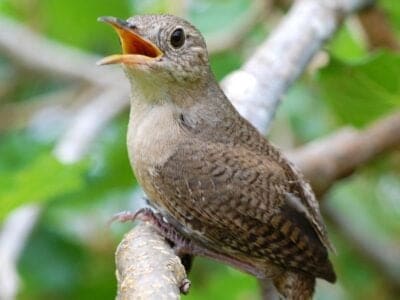
House wren
The wren’s epithet, aedon, comes from a Greek queen who accidentally killed her only son. She was actually aiming for her nephew, and Zeus took pity on her and turned her into a nightingale.

Housefly
The fly has no teeth

Howler Monkey
Spends 80% of it's time resting!

Human
Thought to have orignated 200,000 years ago!

Hummingbird
Beat their wings up to 80 times per second!

Huntsman Spider
Some huntsman spiders have an interesting way of moving around. Some cartwheel while others do handsprings or backflips.

Ibis
Found in swamps, marshes and wetlands!
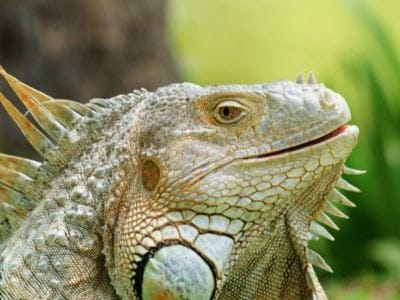
Iguana
Uses visual signals to communicate!

Insects
There are an estimated 30 million species!

Jacana
The jacana has the ability to swim underwater

Jack Crevalle
One of the biggest species in the Caranx genus
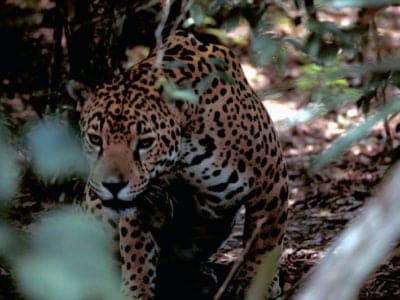
Jaguar
The largest feline on the American continent!

Jumping Spider
Some can jump 50 times the length of their bodies

Kingfisher
Inhabits wetlands and woodlands worldwide!

Ladybug
There are more than 5,000 species worldwide!

Leech
Has 10 pairs of eyes!
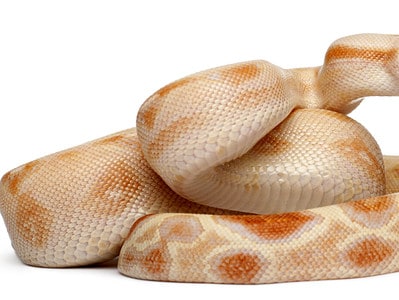
Lipstick Albino Boa
Lipstick albino boas are a designer morph that you'll only find from breeders.

Lizard
There are around 5,000 different species!

Locust
Each locust can eat its weight in plants each day.
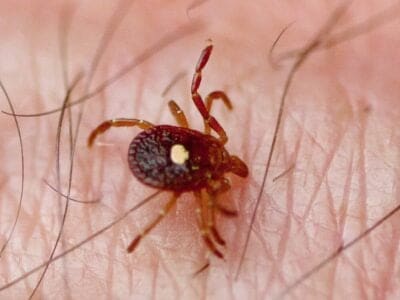
Lone Star Tick
Only females have the ‘lone star’ marking

Macaw
The largest species of parrot in the world!

Maggot
Will only live in wet areas

Mallard
With an appropriate tail wind, the mallard can travel hundreds of miles a day

Maned Wolf
Despite its name, the Maned Wolf is not actually a wolf.

Margay
Margays are one of the world’s most highly adapted cat species for climbing trees!

Mayfly
There are 2,500 known species worldwide!

Mealybug
They have a symbiotic relationship with ants.
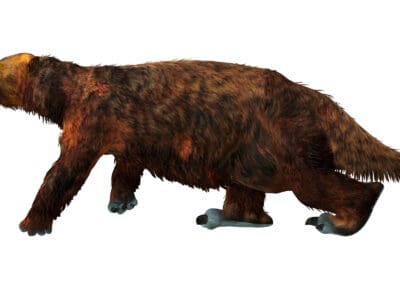
Megatherium
Megatherium probably used its lips more than its tongue when feeling for choice leaves in the treetops.
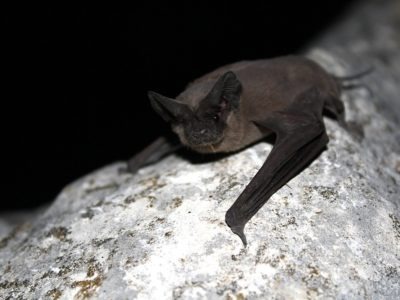
Mexican Free-Tailed Bat
Some colonies have millions of bats

Millipede
Some species have a poisonous bite!

Mockingbird
Mockingbirds are incredible mimics that can learn hundreds of songs!

Mole
Primarily hunts and feeds on Earthworms!
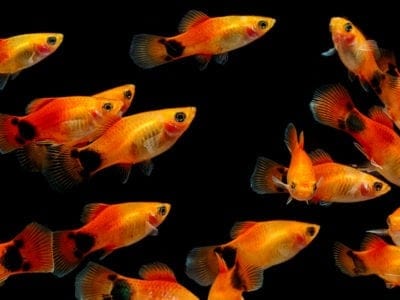
Molly
Known for their calm and peaceful nature!

Mongrel
Has characteristics of two or more breeds!

Monkey
There are around 260 known species!

Moorhen
Feeds on aquatic insects and water-spiders!

Mosquito
Only the female mosquito actually sucks blood

Moth
There are 250,000 different species!
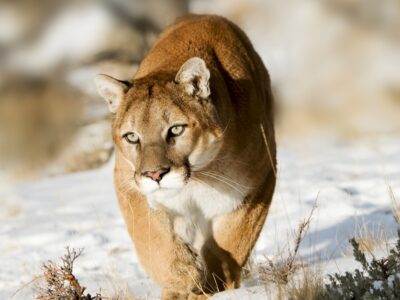
Mountain Lion
Has no real natural predators!

Mouse
Found on every continent on Earth!

Mule
The offspring of a horse and donkey parents!
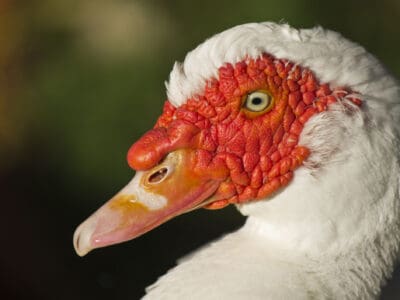
Muscovy Duck
Unlike most duck species, the Muscovy is silent and only makes noise when excited or threatened.

Nematode
Nematodes range in size from 1/10 of an inch to 28 feet long

No See Ums
There are more than 5,000 species.
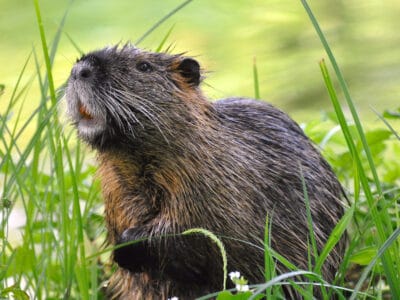
Nutria
An invasive species, one female nutria can birth up to 200 babies in just a few years of living!
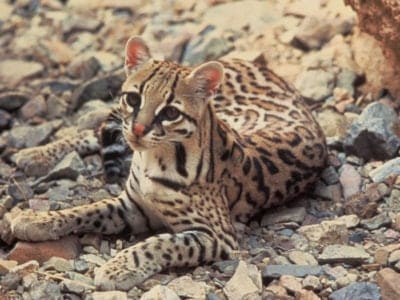
Ocelot
Also known as the Painted Leopard!

Orb Weaver
Females are about four times the size of males

Osprey
They reuse nesting sites for 70 years!

Otter
There are 13 different species worldwide

Owl
The owl can rotate its head some 270 degrees
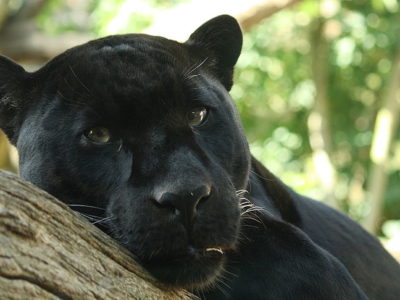
Panther
Prefers to hunt at night than during the day!
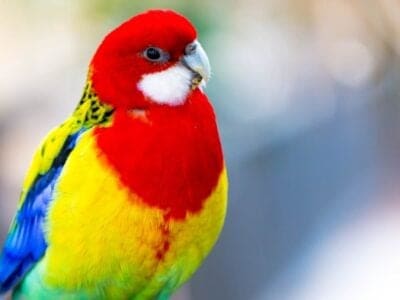
Parakeet
Monk parakeets are the only parakeets that actually build nests. They’re also the only parakeets to nest in great colonies.

Parrot
Can live for up to 100 years!
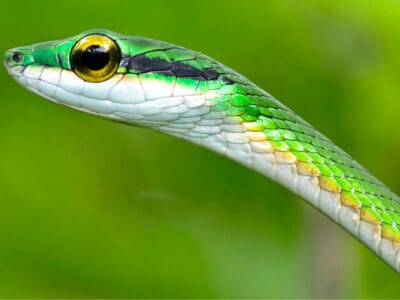
Parrot Snake
The parrot snake shows off with bright green and bronze colors that cover its entire body.

Parrotlet
Parrotlets aren't the world's tiniest parrot — that would be the pygmy parrot of Australasia.

Peregrine Falcon
Fastest animal on Earth

Pheasant
Females lay between 8 and 12 eggs per clutch!

Pigeon
They can find their way back to their nests from up to 1300 miles away.
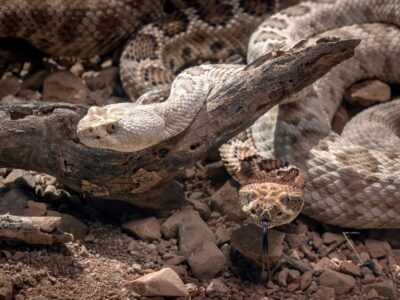
Pit Viper
Pit vipers's fangs fold up into their mouths when they don't need them.
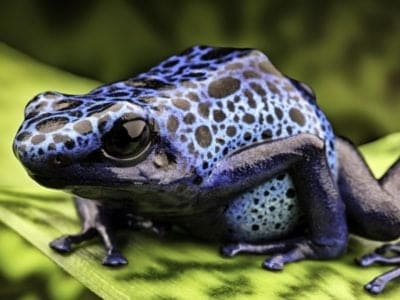
Poison Dart Frog
Inhabits the jungles of Central and South America!

Pompano Fish
They are bottom-feeders

Porcupine
There are 30 different species worldwide!

Praying Mantis
The mantis can turn its head 180 degrees.

Puma
Has longer back legs than front legs!

Quail
Inhabits woodland and forest areas worldwide!
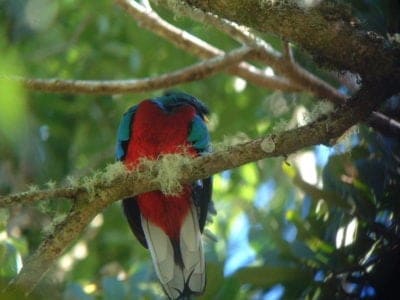
Quetzal
The tail feathers of the male can be 1m long!

Rat
Omnivores that eat anything!

Rattlesnake
Rattlesnakes may have evolved their rattle to warn bison away from them.

Red-Footed Tortoise
Male and female Red-Footed Tortoises move their heads to communicate.
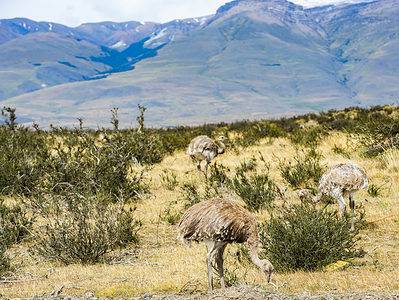
Rhea
Male rheas mate with up to a dozen females and single-handedly raise up to 80 chicks at once!

River Turtle
Inhabits freshwater habitats around the world!

Rodents
The capybara, the world’s largest rodent, likes to be in and around bodies of water. Because of this, the Catholic Church in South America decided that it was a fish, and people were allowed to eat it during Lent and First Fridays.

Rooster
Will mate with the entire flock!
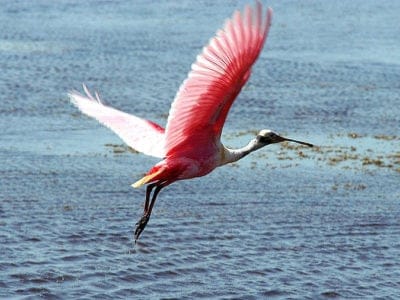
Roseate Spoonbill
The only Spoonbill in the western hemisphere!

Saber-Toothed Tiger
Canines up to 7 inches long!

Sable Ferret
Ferrets were used during the Revolutionary War to keep down the rat population.

Salamander
There are more than 700 different species!

Sand Crab
The sand crab burrows beneath the sand with its tail

Scorpion
There are around 2,000 known species!

Seahorse
Males give birth to up to 1,000 offspring!
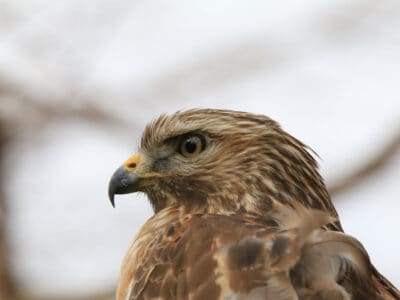
Sharp-Shinned Hawk
In captivity, sharp-shinned hawks can live up to 13 years. However, in the wild, this number is significantly reduced to 3 years!

Sheep
Around 35 million in the English countryside!

Short-Eared Owl
The short-eared owl is one of the most widespread owl species in the world, covering five continents.

Shrew
The spinal column of the shrew Scutisorex somereni is so strong and reinforced that it can support the weight of an adult human.

Shrimp
There are 2,000 different species worldwide!
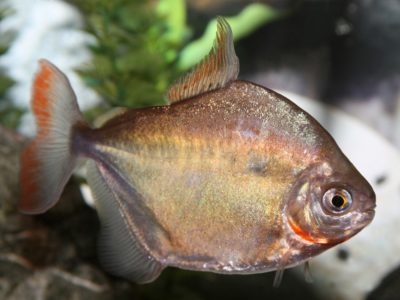
Silver Dollar
Closely related to the Piranha

Skink Lizard
Some skinks lay eggs in some habitats while giving birth to skinklets in other habitats.
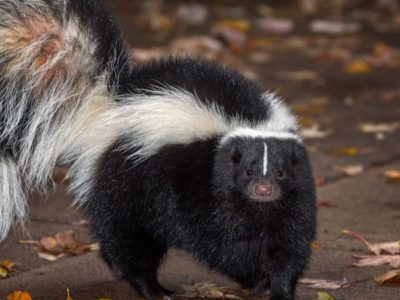
Skunk
Also known as the Polecat!
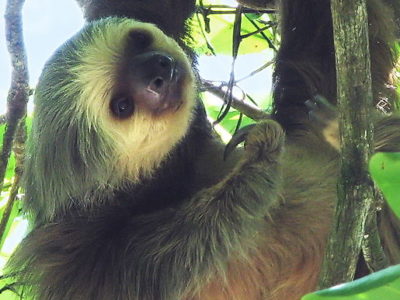
Sloth
It's body temperature is between 30 - 34 degrees!

Slug
They glide around on one foot, which is aided by the slime they produce

Smokybrown Cockroach
Has up to 45 eggs per egg case

Snail
There are nearly 1,000 different species!

Snake
There are around 4,000 known species worldwide
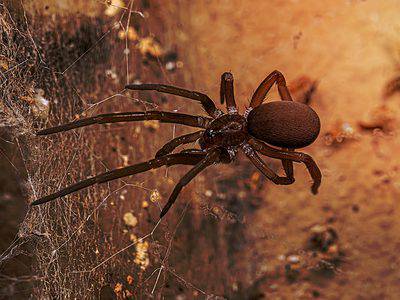
Southern House Spider
Large web making house spider

Sparrow
There are 140 different species!

Spider Wasp
They prey on spiders to feed their larvae or they parasitize other spider wasps.

Squirrel
Small rodents found in woodlands worldwide!

Stick Insect
There are more than 3,000 different species!

Stork
They can’t sing like other birds.
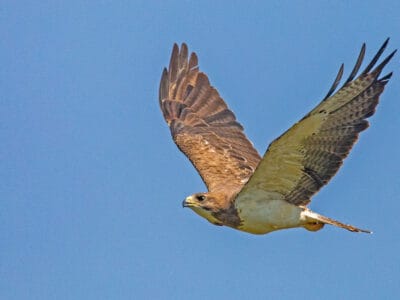
Swainson’s Hawk
Their wings form a “V” shape when flying.

Swan
Populations have been affected by pollution!

Tapir
Most closely related to horses and rhinos!

Tarantula Hawk
Tarantula hawks are excellent pollinators, especially for milkweed.

Termite
Their mounds can be up to 9 meters tall!

Thrush
The American robin is called the robin because its red breast reminded European settlers of the robin back in the old country.

Tick
They inject hosts with a chemical that stops them from feeling the pain of the bite

Tiger Beetle
The adult tiger beetle is one of the fastest land insects in the world

Tortoise
Can live until they are more than 150 years old!
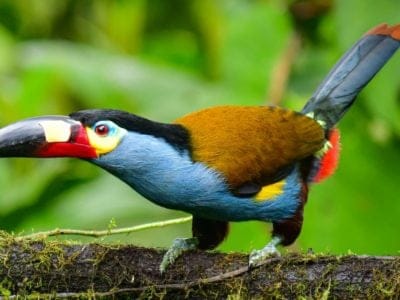
Toucan
There are more than 40 different species!

Tree Cricket
They make music with their wings

Tree Frog
Found in warmer jungles and forests!

Turtles
Some species of aquatic turtles can get up to 70 percent of their oxygen through their butt.
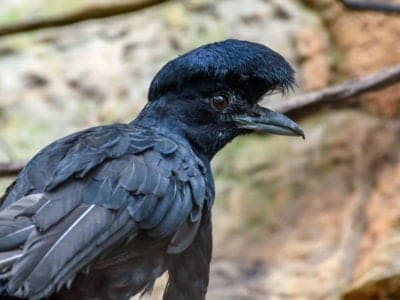
Umbrellabird
Migrates up and down the mountains!

Upland Sandpiper
They make jerky movements as they walk through the grass, searching for food.
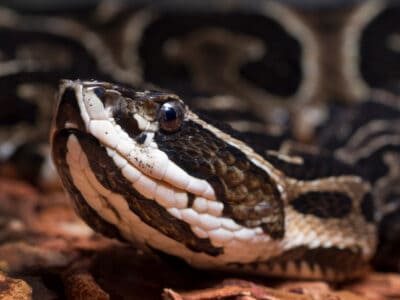
Urutu Snake
The female Urutu snake grows longer and heavier than males of the same species

Vampire Bat
Have a heat sensor on the end of their nose!

Vinegaroon
Vinegaroons can spray 19 times before the glands are depleted

Vulture
There are 30 different species worldwide!

Wasp
There are around 75,000 recognised species!
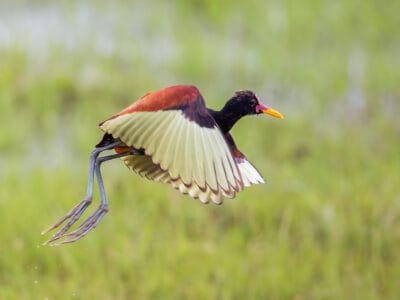
Wattled Jacana
They are typically noisy birds but take on a soft tone with their young.

Whiptail Lizard
Many whiptail species reproduce asexually.

White Ferret / Albino Ferrets
There are two different types of white ferrets!

Wolf Spider
Carnivorous arachnid that hunts its prey.

Woodlouse
This animal can roll up into a ball

Woodpecker
There are 200 different species!

Worm
Doesn’t have eyes.
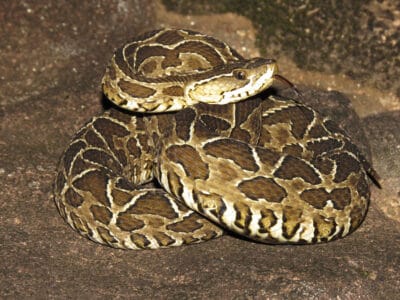
Yarara
Females are much larger than males

Yellow Anaconda
Anacondas take prey much bigger compared to body weight than other snakes.
Uruguayan Animals List
- Agouti
- Amazon Parrot
- Ant
- Anteater
- Armadillo
- Armyworm
- Banjo Catfish
- Barb
- Barn Owl
- Barn Swallow
- Bat
- Bear
- Bed Bugs
- Bee
- Beetle
- Bird
- Biscuit Beetle
- Black Tarantula
- Black Widow Spider
- Bobolink
- Booby
- Brazilian Black Tarantula
- Brazilian Treehopper
- Brown Dog Tick
- Butterfly
- Caecilian
- Caiman
- Camel Cricket
- Capybara
- Carpenter Ant
- Cascabel
- Cat
- Caterpillar
- Catfish
- Centipede
- Ceratosaurus
- Chicken
- Chilean Recluse Spider
- Cichlid
- Cockroach
- Codling Moth
- Collared Peccary
- Common Furniture Beetle
- Common House Spider
- Coral Snake
- Cormorant
- Cory Catfish
- Cow
- Crab
- Crab-Eating Fox
- Crab Spider
- Cricket
- Crocodile
- Crocodylomorph
- Crow
- Cuckoo
- Dog
- Dog Tick
- Donkey
- Dragonfly
- Dubia Cockroach
- Duck
- Dung Beetle
- Dusky Shark
- Dwarf Boa
- Eagle
- Earthworm
- Earwig
- Eel
- Falcon
- Fallow deer
- False Widow Spider
- Fiddler Crab
- Firefly
- Flamingo
- Flea
- Fleckvieh Cattle
- Fly
- Flying Squirrel
- Frog
- Fruit Fly
- Fulvous Whistling Duck
- Gecko
- German Cockroach
- Glowworm
- Gnat
- Grasshopper
- Guinea Pig
- Guppy
- Gypsy Moth
- Hamster
- Hare
- Harpy Eagle
- Harris’s Hawk
- Hawk Moth Caterpillar
- Hercules Beetle
- Heron
- Hognose snake
- Honey Bee
- Argentine Horned Frog
- Horse
- Horsefly
- House wren
- Housefly
- Howler Monkey
- Human
- Hummingbird
- Huntsman Spider
- Ibis
- Iguana
- Insects
- Jacana
- Jack Crevalle
- Jaguar
- Jumping Spider
- Kingfisher
- Ladybug
- Leech
- Lipstick Albino Boa
- Lizard
- Locust
- Lone Star Tick
- Macaw
- Maggot
- Mallard
- Maned Wolf
- Margay
- Mayfly
- Mealybug
- Megatherium
- Mexican Free-Tailed Bat
- Millipede
- Mockingbird
- Mole
- Molly
- Mongrel
- Monkey
- Moorhen
- Mosquito
- Moth
- Mountain Lion
- Mouse
- Mule
- Muscovy Duck
- Nematode
- No See Ums
- Nutria
- Ocelot
- Orb Weaver
- Osprey
- Otter
- Owl
- Ox
- Panther
- Parakeet
- Parrot
- Parrot Snake
- Parrotlet
- Peregrine Falcon
- Pheasant
- Pigeon
- Pit Viper
- Poison Dart Frog
- Pompano Fish
- Porcupine
- Praying Mantis
- Puma
- Quail
- Quetzal
- Rat
- Rattlesnake
- Red-Footed Tortoise
- Rhea
- River Turtle
- Rodents
- Rooster
- Roseate Spoonbill
- Saber-Toothed Tiger
- Sable Ferret
- Salamander
- Sand Crab
- Scorpion
- Seahorse
- Sharp-Shinned Hawk
- Sheep
- Short-Eared Owl
- Shrew
- Shrimp
- Silver Dollar
- Skink Lizard
- Skunk
- Sloth
- Slug
- Smokybrown Cockroach
- Snail
- Snake
- Southern House Spider
- Sparrow
- Spider Wasp
- Squirrel
- Stick Insect
- Stork
- Swainson’s Hawk
- Swallowtail Butterfly
- Swan
- Tapir
- Tarantula Hawk
- Termite
- Thrush
- Tick
- Tiger Beetle
- Tortoise
- Toucan
- Toxodon
- Tree Cricket
- Tree Frog
- Turtles
- Umbrellabird
- Upland Sandpiper
- Urutu Snake
- Vampire Bat
- Vinegaroon
- Vulture
- Wasp
- Wattled Jacana
- Whiptail Lizard
- White Ferret / Albino Ferrets
- Wolf Spider
- Woodlouse
- Woodpecker
- Worm
- Yarara
- Yellow Anaconda
Animals in Uruguay FAQs (Frequently Asked Questions)
What kind of animals live in Uruguay?
Since Uruguay has many different ecosystems, you can find a wide variety of wildlife in the country. There are 19 bat species in the country, along with 32 species of rodents. You may spot some of the 24 different species of dolphins, porpoises and whales along the coast. The country is also home to 14 different types of carnivores.
Are there Jaguars in Uruguay?
Jaguars are extinct in Uruguay.
Are there crocodiles in Uruguay?
Yes, the broad-snouted caiman is a species of crocodile found in Uruguay. It usually lives in slow-moving water, and you may spot it in manmade cow ponds.
What is the national animal of Uruguay?
The national animal of Uruguay is the southern lapwing, which is often called the taro.
Are there monkeys in Uruguay?
There may be a limited number of howler monkeys living in forests in Uruguay, where you can find many other types of wildlife, including Geoffroy’s cats and ocelots.




